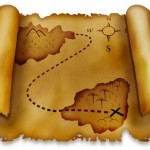
Well, thank you Bureau of Land Management (BLM)! Here online, the BLM has recently added a number of land patent images for the plains states and images of the western states’ duplicate original survey plats. The survey plat states include California, Oregon, Utah, Washington and Wyoming.
The Government Land Office (GLO) – Eastern States Office is the home of the Secretary of Interior’s official copies of over nine million records. For any genealogy researcher, getting the images of the various original documents online is an ongoing project.
What exactly does this mean? For the family history researcher whose ancestors homesteaded or purchased land from the federal government – from the east coast to the west coast – many records beginning in 1820 are online at the U.S. Department of the Interior, Bureau of Land Management, Official Federal Land Records website.
The types of land titles are:
- Cash Entry
- Homestead
- Military Warrants
There are also images online related to survey plats and field notes. A genealogy researcher looking for land records, both metes and bounds and rectangular survey, should have some background knowledge of how the boundaries were delineated.
This is where surveyors come in. The official record is a cadastral survey (a primary resource) and includes survey plats and field notes. The field notes are the narrative record of the project and include a list of individuals who participated in the work. The BLM-GLO website does a good job of explaining the surveying process for us family history researchers and genealogists.
When first using the BLM-GLO web site, genealogy researchers should start by checking out the Research Center and resist the temptation to go straight to the document. Family history researchers should learn a little about the history of public lands and the record keeping process. These search tips will maximize the amount of information that can be gleaned by the genealogy researcher from the available images. Then, check out the patents, survey plats and field notes. See who the neighbors were. Use the maps to locate the land in your ancestor search.
Why should a family history researcher care about this BLM-GLO web site? Because you, genealogy researcher, may have just added another chapter to your family history.
The BLM-GLO website is not one this RecordClick genealogist visits daily. I like to check it every couple of months to see what has been put online. I have been waiting for ten years for the major homesteading states to have their titles be digitized and put online. I knew of only two members in my ancestor search who homesteaded in Kansas. But I was surprised when another name—that of my gg-grandmother Margaret– came up in my genealogy research.
Margaret did not have an easy life, according to my family history research, but she was one of the gutsiest ladies in my ancestor search. Born in 1826, and one of the oldest of a family with more than 12 children, she married young. She never learned to read and write, although I have seen a signature or two on a legal document. She had at least eight children and persevered when a husband and two sons participated in the Civil War.
This family history researcher found that there were the moves – including one from New York State to a lackluster homestead in Nebraska in 1870. There was the separation from her husband, partially because of drinking issues, at about the same time the Nebraska homestead was proved up and sold. After the separation, she bought a small farm in Nebraska. That’s all that I knew. What had never become part of the family lore was that in 1887, at the age of 60, when many folks start thinking about slowing down, gg-grandmother Margaret took ownership of her own homestead in Kansas.
Wow!
Now that this genealogical researcher knows Margaret had a homestead in Kansas and where it was located, I want to get the courthouse deed records that verify when the land was purchased and sold. Like most family history researchers, I want to add more to the family history.
Land records are an excellent resource for the family history researcher. Yet, working with land records gets complicated. At RecordClick, our genealogy researchers will look for the deeds and documents for your family properties. We work with courthouse records and documents all the time. And we are happy build another story in the land of your family history search.








